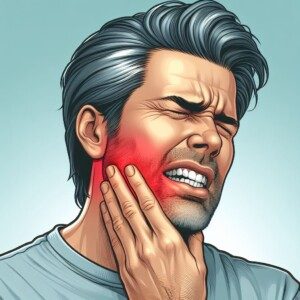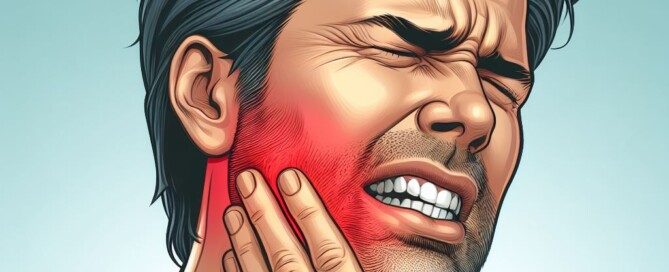Can a Heart Attack Cause ONLY Jaw Pain, No Other Symptoms?

If you’ve been having ONLY jaw pain, a heart attack or imminent heart attack needs to be ruled out. (more…)
Sticky Gluey Lips: Causes and Solutions by Dermatologist

Are your sticky and gluey lips driving you mad?
Do your lips sometimes feel like there’s rubber cement coating them?
The good news is that this is not a sign of cancer or a neurological disease. (more…)
If It Looks Like Melanoma, How Likely IS It Melanoma…?

If something on your skin looks like melanoma, does this usually mean that it IS melanoma, or just HOW do the odds swing in cases like this? (more…)
How Can Only Milliseconds Make a Difference in LQTS?

It’s amazing that only 30 milliseconds—the blink of an eye—is the difference between a normal heart & one that’s at risk for suddenly stopping due to LQTS. (more…)
Does Genetic LQTS Affect Older Adults or Just Kids & Teens?

Online info about genetic LQTS always says that it “affects children and young adults.”
This implies long QT syndrome can be outgrown if it doesn’t kill first. It’s time to clarify this very misleading information. (more…)
Life Expectancy if Long QT Syndrome Is Not Treated

There’s the case of a woman who didn’t learn she had genetic LQTS till age 82, yet had never suffered a sudden cardiac arrest.
But that’s a very exceptional case. On the other hand, nobody knows just how many people live into old age with undiagnosed long QT syndrome.
What’s only known is that every so often, the condition is first diagnosed in someone well past middle age. Usually LQTS is diagnosed in childhood or young adulthood.
How do people live as long as the 82-year-old with untreated genetic long QT syndrome, while others suffer from a sudden cardiac arrest at a very early age? (more…)
MRI vs. CT Scan for Chronic Subdural Hematoma

Why isn’t MRI the tool of choice for chronic subdural hematoma since the CT scan emits radiation?
A brain bleed might require many follow-up imagings during the course of treatment and recovery. (more…)
MRI vs. CAT Scan for Acute Abdominal Pain

Why is the CT scan the first imaging tool of choice for acute abdominal pain since it emits radiation?
What if the patient in the ER insists on an MRI to avoid the radiation exposure? (more…)
How Can a CT Scan Miss a Chronic Subdural Hematoma?
There are cases in which a chronic subdural hematoma on a CT scan image is missed.
How can this be? (more…)
Why Can’t an MRI Be Used for Calcium Scoring?

Since the CT scanner emits radiation, why isn’t MRI technology used to determine one’s calcium score?
After all, there is zero emission of radiation from an MRI procedure.
Furthermore, many people would much prefer lying inside the famed MRI “tube” than being exposed to the radiation from a CT scan.
The CT scan is what’s used for measuring the calcium score.
Magnetic resonance imaging is known to be more sensitive than CT scan for the detection of certain conditions.
MRI is a highly sensitive procedure, able to pick up or discern certain findings with more sensitivity than will an ultrasound or mammogram.
An example is an MRI detecting a malignant breast tumor that was “missed” on an ultrasound as well as mammogram.
But calcium scoring is a whole new animal.
“MRI cannot be used for calcium screening because MRI is relatively insensitive for detection of calcification,” says Resham Mendi, MD, a renowned expert in the field of medical imaging, and the medical director of Bright Light Medical Imaging.
Dr. Mendi adds, “CT is far more sensitive. MRI would be an ineffective test to look for calcific plaque in the coronary arteries.”
This will come as a surprise to anyone who knows that magnetic resonance imaging provides a very high degree of sensitivity.
Nevertheless, this high sensitivity does not apply to calcified plaque inside coronary arteries.
CT Scan, not MRI, Is Your Only Option
If you’re interested in determining your calcium score, you’ll need to undergo a CT scan specifically designed for this purpose.
This scan provides valuable information about the amount of calcium buildup in the coronary arteries, which can be an indicator of coronary artery disease (CAD).
However, there are certain individuals for whom this scan is not recommended.
For instance, a woman who is pregnant or trying to conceive should avoid undergoing a coronary calcium scan. The radiation may pose risks to a developing fetus.
Additionally, a coronary calcium scan is not usually recommended for people at low risk for CAD.
This is because the primary benefit of the scan is to assess risk in people who may have symptoms or risk factors suggesting potential coronary artery disease.
Many healthy individuals who are at low risk for CAD are undergoing CAC scoring due to increased awareness and interest in heart health.
However, for these low-risk individuals, the results may not provide additional actionable information that would change their management or treatment significantly.
The scan is more useful for those who have risk factors, such as a family history of heart disease, high blood pressure, high cholesterol and obesity.
If you’re healthy, fit and at low risk for coronary heart disease, you should discuss the practicality of calcium scoring with a cardiologist.





































































